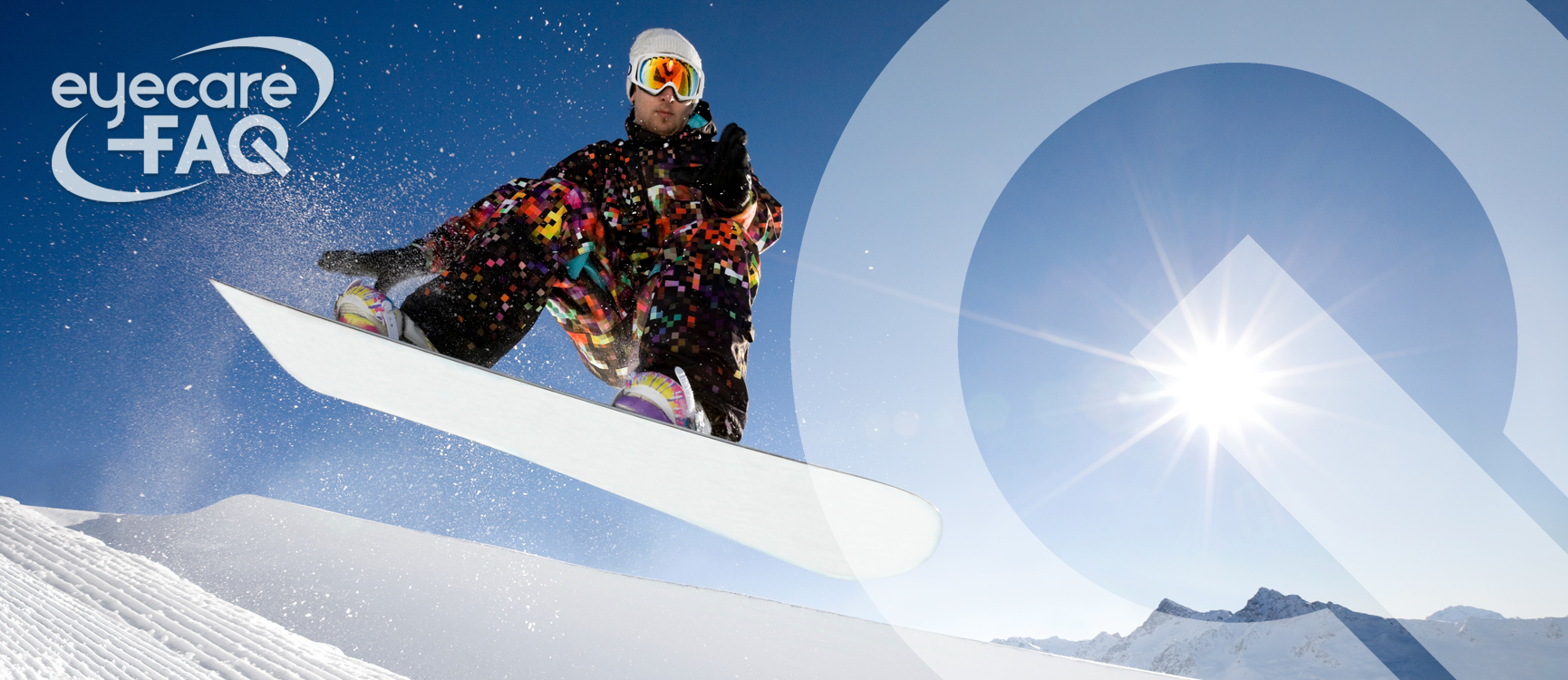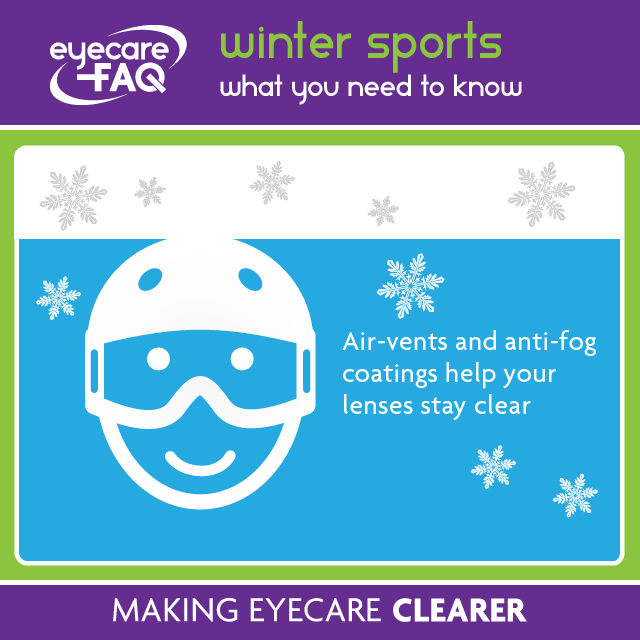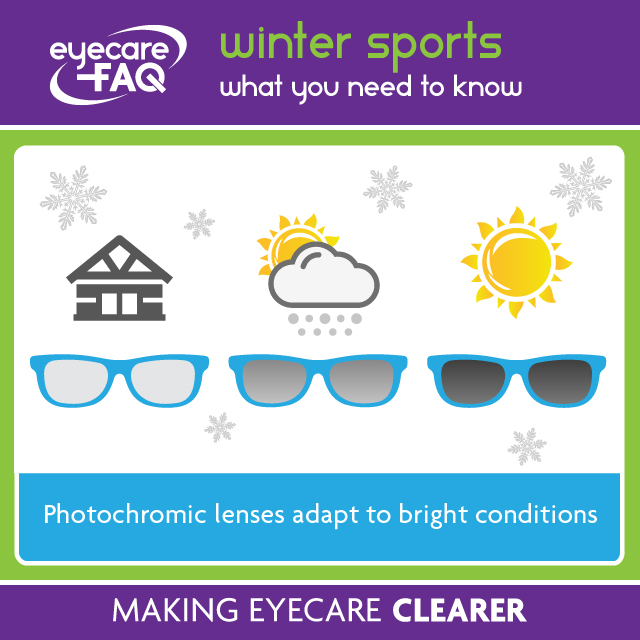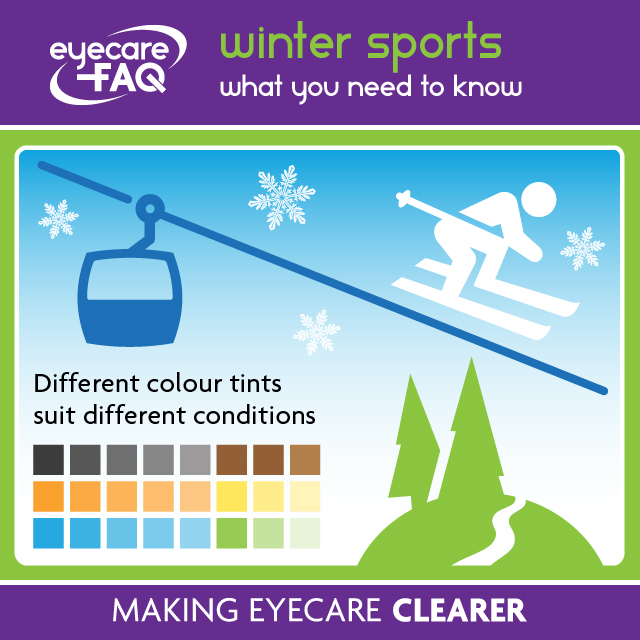Do I need to think about UV protection for my eyes during winter sports?
UV light can contribute to premature ageing of the eye, and is a factor in eye problems like cataract. Light is reflected off snow, even on a cloudy day, and the higher you are, the greater the exposure to UK, so check that your ski goggles or sunglasses offer 100% UVA and UVB protection. A good sunscreen applied regularly through the day will protect the skin and good quality sun wear will protect the eyes. Read the label and ask a registered dispensing optician for advice.
How should I protect my eyes when snow skiing?
Eye protection for skiing is usually used in goggle form. If you normally wear glasses, prescription inserts can be fitted inside the goggles. Snow reflects visible and UV light, increasing the overall brightness, so in sunny conditions you may want lenses with a very dark brown tint. For overcast, flat light days, in which there is an over-abundance of blue light, yellow or rose tints may be best. Grey tints reduce transmittance across the spectrum. Polarised lenses may also be used, but these tend to mask small contours on the slope. Visible and UV transmittance may also be further reduced by the use of mirror coatings.
Ask a dispensing optician about the best options to protect your eyes when skiing.
What is the best lens material for ski goggles and sunglasses?
Look for lenses made from polycarbonate as this is stronger than regular plastic. Polycarbonate is lighter than regular plastic lenses, is very impact resistant and will not shatter. It also is more fog-resistant and naturally absorbs UV light. Trivex is another strong, lightweight plastic with superb impact resistance that is suitable for sports eye wear. Avoid glass lenses for active winter sports.
What are the best frames for winter sports eyewear?
Pick plastic frames over metal every time: plastic frames with moulded nose pads are safer than metal ones. Plastic frames can be made to curve round your face providing a wider field of view and better protection from wind and glare. You can achieve a better fit with mouldable plastic: ask a dispensing optician for help with fitting sunglasses before you leave so your frames don’t shift while you are active. Select a lightweight plastic frame for maximum comfort when wearing all day. Some frames have vents built in for better airflow and less fogging. Look out for no slip temple grips and nose pads, foam inserts and elastic straps so that your eyewear is guaranteed to stay in place.
Should I choose polarised lenses for winter sports?
Polarised lenses will help reduce glare reflected off the snow. Some people find that this makes it more difficult to distinguish ice from snow, so you may want to try both and see what works best for you. Mirrored lenses are another option if you don’t like polarised lenses.
Should I choose photochromic lenses for winter sports?
Photochromic lenses get darker in bright sunshine. They work most effectively at cold temperatures and can save you having to swap eyewear depending on the conditions.
Should I choose mirror tinted lenses for skiing and snowboarding?
Mirror coating a lens cuts the amount of light reaching your eyes, and can reduce the dazzle of snow while still allowing you to see the reflected glare off icy patches. Mirror coatings are available in a graduated tint, cutting light levels where you need it most.
Is anti-fog important for eyewear for skiing or snowboarding?
A number of specialist sports products now come with an anti-fog coating on the lenses and vents to allow better airflow. This can save you from having to remove your eyewear to defog as conditions change.
What is the best colour lens for winter sports?
Different colour lenses will help with different conditions.
Grey: great for all weather use, block glare without changing your colour perception.
Brown, Amber, Rose: good to enhance contrast against a white background, so you can see shadows, ridges and bumps. Choose brown for bright sunshine, and amber or rose for lower light levels.
Yellow: Great for low light and overcast days. Filters out blue light to enhance your perception of shadows. Better contrast and perception of better visual acuity.
Some eyewear comes with interchangeable lenses which can help with varied weather conditions.
Should I choose goggle or sunglasses for winter sports?
Snowboarders use goggles whatever the weather, while skiers may only use them in more extreme conditions. When choosing a goggle, make sure it is well vented to prevent fogging. Check how either type of eyewear will fit with your helmet.
I wear specs already: how will this work for skiing?
Prescription lenses can be fitted in most sunglasses. Wrap style frames and goggles may require a prescription insert. There are also goggles that are made to fit over your glasses. Contact lenses can also be a good choice. Talk to your dispensing optician about the best option for you.




